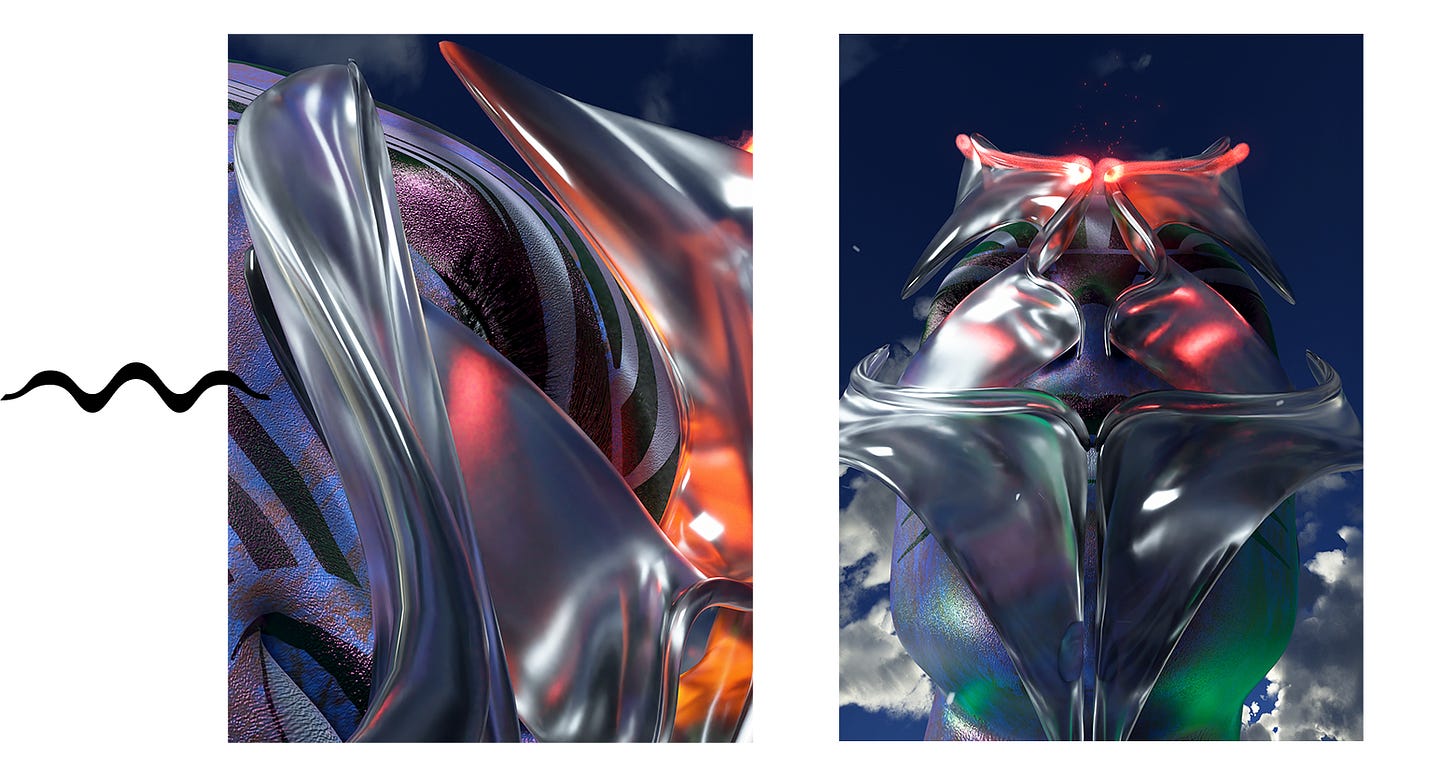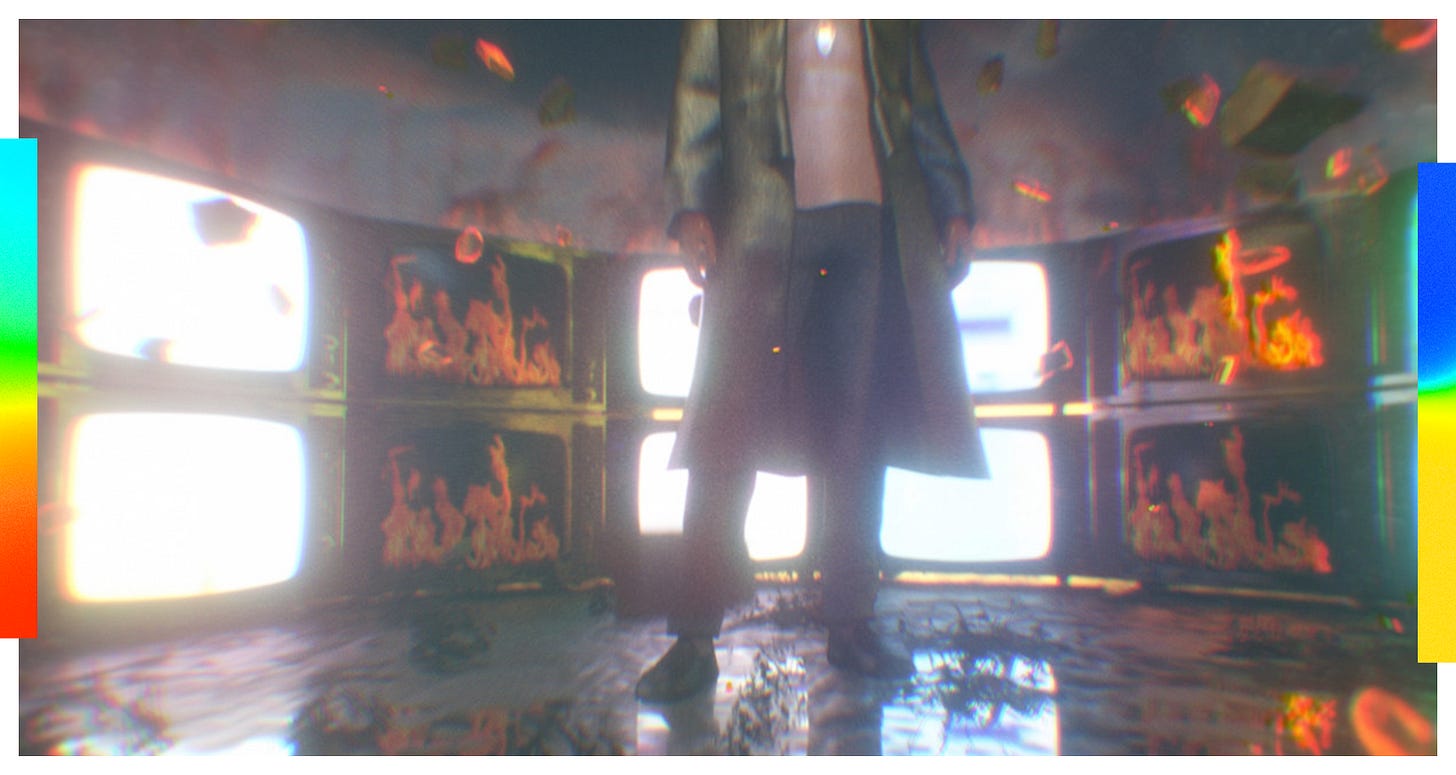Creating Fire from the Waves with Hugo Richel
In partnership with the French artist, Rumfoords is proud to present an AR filter inspired by Hugo Richel's time spent in Basque Country. We sat down with him.
Rumfoords is the only blog on the internet with an erudite and refined eye for digital luxury and style.
We know who’s creating the most opulent virtual gear. And when we select them for a feature here in the pages of our journal, it means they’ve made it to the highest echelon of virtual style and luxury.
Hugo Richel is one such digital style artist. From the start, we here at Rumfoords have considered his work, whether in music or art or fashion, to be one of the finest current examples of digital streetwear and virtual style.
Working in mediums ranging from film to AR filters, Hugo Richel’s work captures the playful aggression of hip-hop and the otherworldliness of science-fiction simultaneously.
His work is stunning yet laid-back, worthy of a gallery but doesn’t take itself too seriously. It is the very definition of digital streetwear and luxury.
For Rumfoords, Hugo Richel created an exclusive AR filter called “Sutan.” We asked the artist about his work and influences.
Rumfoords: This filter is fire! Why don’t we start with the title, “Sutan.” What does that mean?
Hugo Richel: Sutan means fire in the Basque language. Right now I’m in Biarritz, in the southwest part of France. And I’m super, super inspired by the ocean. I surf and even if I don’t surf and I work a lot I need to see the ocean every day. And in my work I’m really into liquid simulation and movement.
And the opposite of water would be fire. Fire scares me, whereas water makes me feel super, super good, super comfy.
So I wanted to create something, a piece of art, where I filmed the ocean and the waves create fire, which is a paradox. The filter creates fire from the wave, the complete opposite of the water.
Here, the Basque culture is strong as fire, so I used a Basque word.
R: Tell me about the mask you created for this filter.
HR: I wanted a mask that could contrast with the fire. So I was focusing less on the form of the mask and more on the material of it.
It’s like glass, like fluid. The form is just aesthetic, I wanted something organic, that could be from nature, but still has a material that you don’t find in nature and that can be the opposite of fire.
My dream is to use this filter when you have water in front of you, on you, or you’re in water.
R: And what about the avatar you designed to model the mask and filter?
HR: I wanted an avatar that was not too realistic and not associated with anything specific or real. I wanted pop and saturated color. With the makeup and the blue color, and the grain you have on the skin, you don’t know where it’s from. So the idea was to have an avatar that could be from another planet but still looks like a realistic skin that could be painted.
The idea is that it’s a kind of beauty mask, like Ines Alpha does a lot. And when you’re moving around you have fire all over the place. So the fire can be all around you when you swipe. If there is one thing moving in your video, like a bird, the bird will be on fire.
R: How much AR filter work do you do compared to avatar and 3D animation work?
HR: It’s 90% in 3D in general and about 5% in filters.
To me, the filters are not as exciting. What is exciting is to see people use it and to find a way to use it in new ways and to see how many hands the filters can get in. The limitations of the filters, the fact that Instagram has to validate them so you can’t do anything you want, makes it less exciting.
All the new technologies that are coming to express yourself, like virtual reality, raytracing, the new lighting approaches, all the materials, all of this you can’t do in filters. So it’s just a small part of my work.
R: You just mentioned all these new ways of expressing yourself. I’m assuming you’re referring to your avatar and 3D design. What is most exciting about that work to you?
HR: For me, the super exciting thing is that you have technology that is going super fast, and artists from all over the world, especially during the pandemic, a lot of them started learning 3D. So now you have the technology moving super fast, all the artists getting into 3D, and I think artists and technology are helping each toward new ways of expressing.
For instance, one thing I’m thinking of is Unreal Engine. It used to be for video games, and it’s now coming to the film and cinema industry as well as music videos and fashion. It can render so nicely, now you can have super fast, super nice results with this software. And five years ago it was not possible.
R: You’ve done some of our favorite digital streetwear work for music videos and fashion advertisements, like for Daily Paper and The Alchemists. What is your role in that work?
HR: For the Alchemists, I did all the creative direction as well as the execution of both the avatars and the clothes. And editing, lighting, everything.
For Daily Paper, they handled creative direction, I created the environments and my friend Samy La Crapule directed it. Daily Paper is quite an innovative brand. I was impressed to see how creative they were in terms of art direction, visual references.
The thing I enjoy the most is to have a bigger artistic responsibility in the project, but it’s also exciting to work on really big projects where you have many, many people who are specialized.
R: What would you like to do next?
HR: Something I think about all the time is to keep working with artists. I love to work directly with artists. I think the less intermediates you have the better the ideas you can have.
I’d like to work on bigger projects, too. Right now I’m doing a full identity for a French festival. I’m pretty proud of that, I think it will be out in a few months.
I want to keep doing 3D, but also go to video and real footage and mix those mediums. Not do 3D all the time in the next few years, but focus a little more on video and do things with mixed mediums. The new technologies, like what they did with “The Mandalorian,” it’s an old technique that was used in the cinema industry but now they’re making it contemporary. I would love to do that for big music videos or fashion campaigns.
My biggest inspiration is from film and cinema, so I’d also like to add more narration to my work. I’d love to add it into my 3D work.
R: How important is the styling and the clothing in 3D to you? What’s it like to style a 3D character?
HR: I’m more and more interested in styling and digital fashion. I consider it being one of the most important things for a 3D avatar. Because you have a huge problem with fast fashion and fashion in general, ecological problems, social problems, and I think maybe in the next few years, especially with cryptoart, fashion will have more and more importance in the virtual identity of people.
These are amazing ways of expression that you can’t find in real life. For instance, transparency, the reflection, the refraction. All of this is super, super interesting. What I like about 3D in general is to think of the scene first as a real physical scene and then ask what more can 3D give me? And that applies to the clothing and fashion, too.






